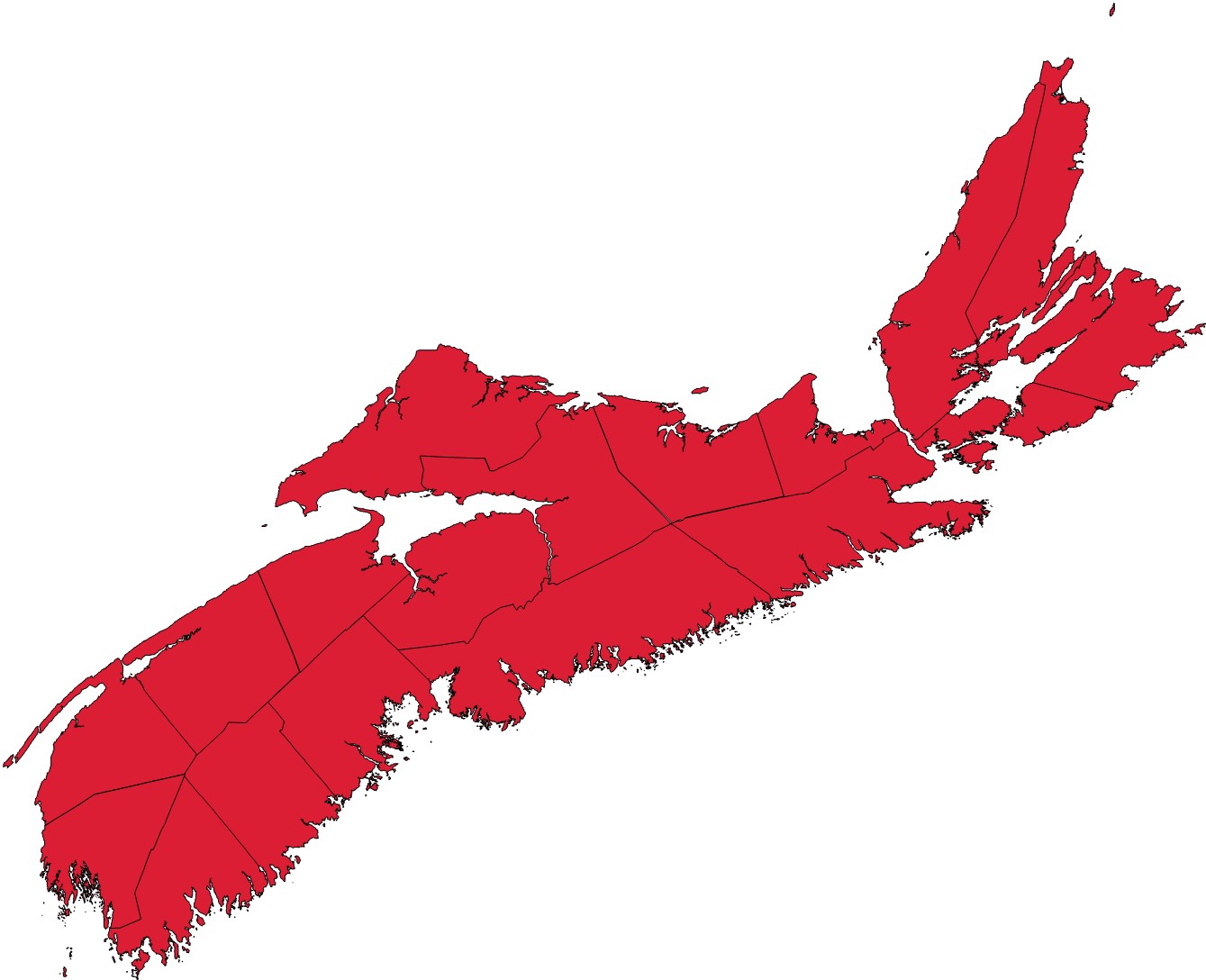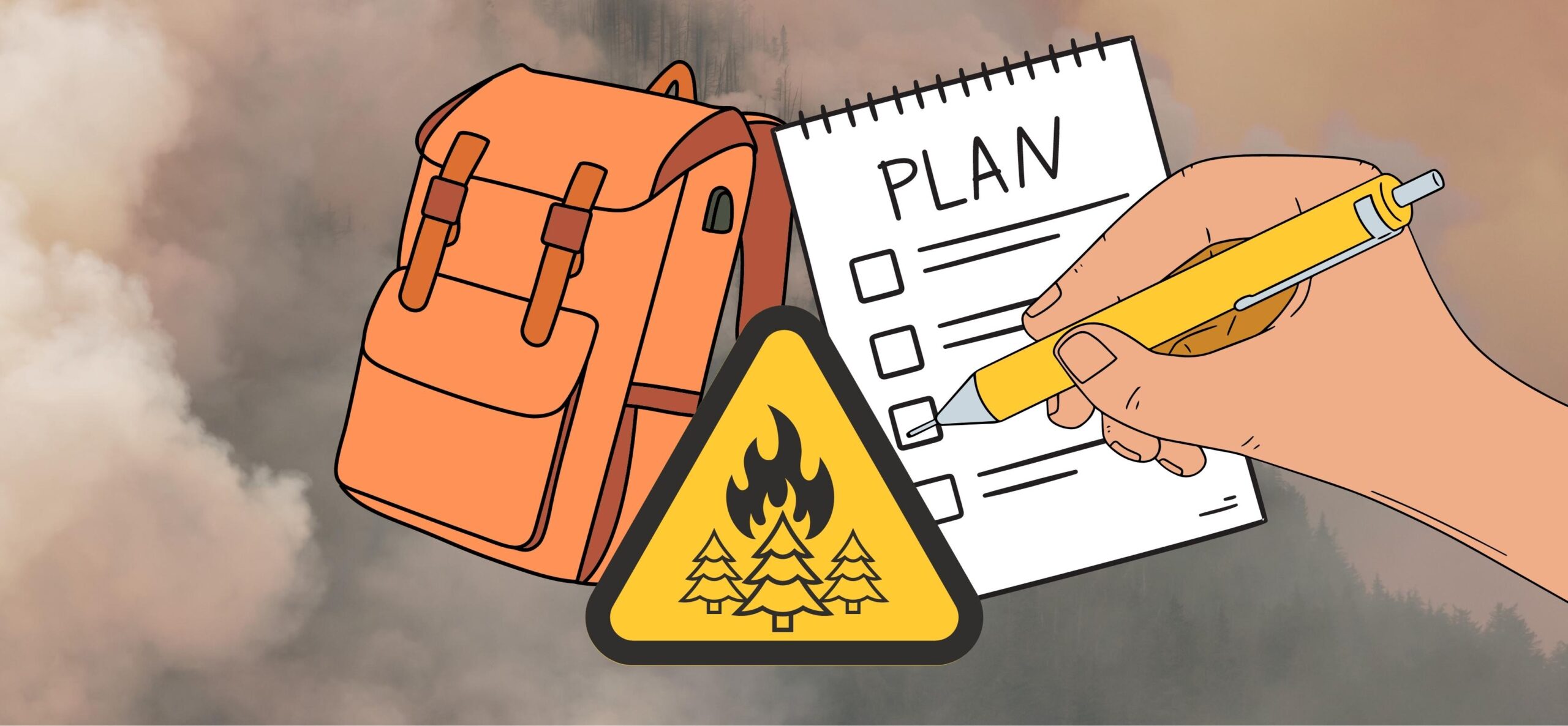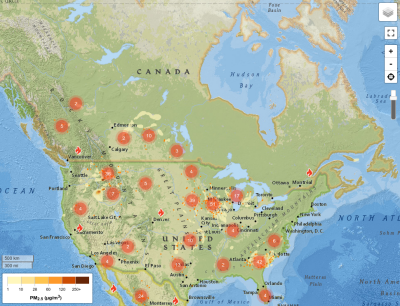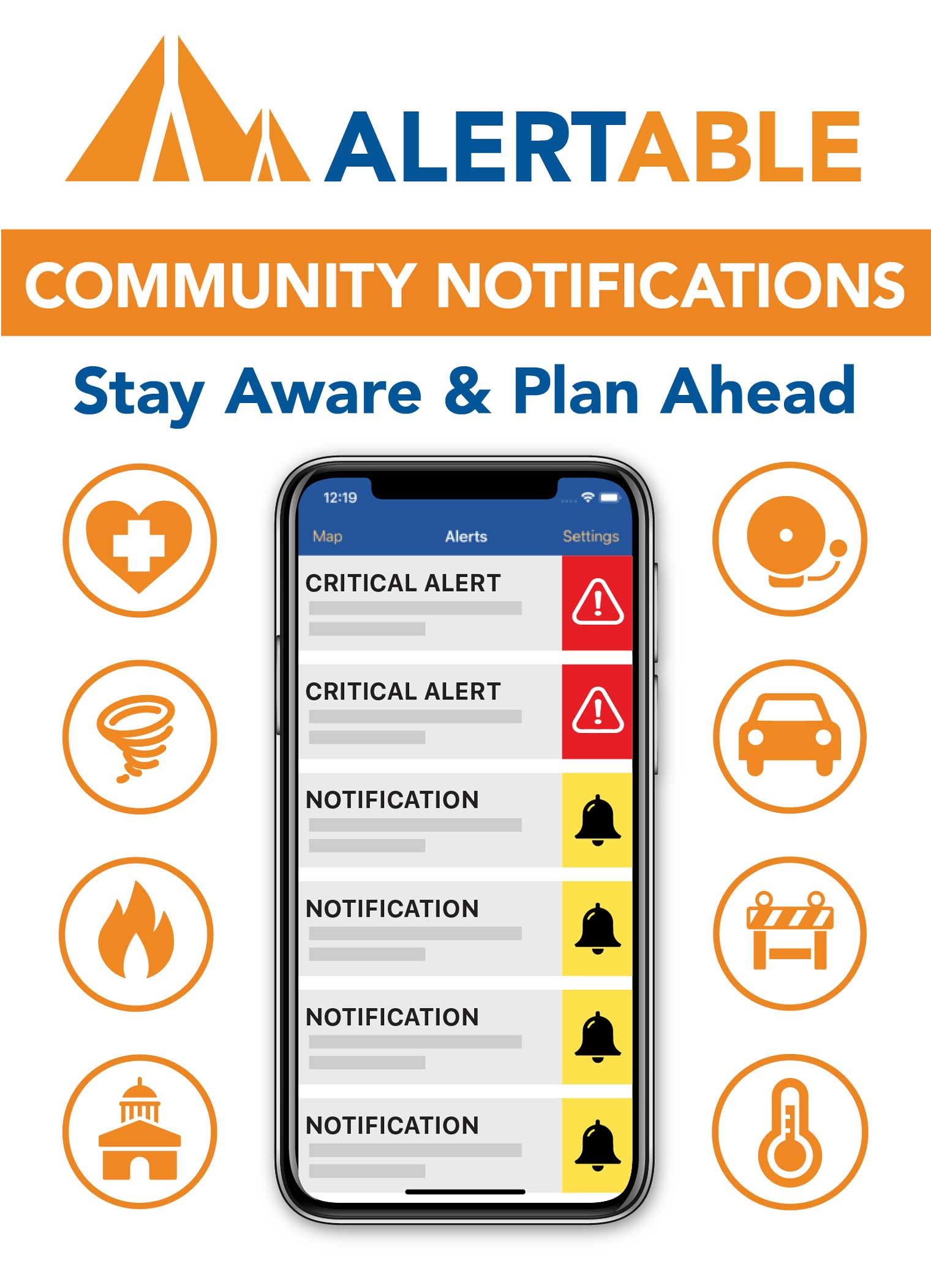Wildfires
WILDFIRES

Throughout the year, it's crucial to understand the risks associated with these natural disasters and the importance of proactive preparedness. The risk of wildfires is highest during wildfire season (March 15 to October 30), when the earth and forests lack moisture.
In 2023 alone, Nova Scotia experienced the devastating impact of wildfires, with 220 reported incidents across the province. These wildfires ravaged approximately 25,000 hectares of Crown and privately owned lands, leaving a trail of destruction in their wake.
Among these incidents, the Barrington Lake wildfire in Shelburne County stands out as the largest in recorded history in Nova Scotia, scorching an astonishing 23,379 hectares. Additionally, a wildfire in Tantallon burned 969 hectares of land. Combined, these wildfires resulted in the destruction of more than 200 homes, underscoring the profound impact that wildfires can have on communities and livelihoods.
Understanding Wildfire Risks
Wildfires pose significant risks to both human lives and natural ecosystems. As we enter wildfire season, it's essential for residents, businesses, and authorities to remain vigilant and prepared. By understanding the factors that contribute to wildfire risk and taking proactive measures to mitigate these risks, we can help protect our communities and minimize the impact of wildfires. It's also important to check the Nova Scotia Check Before You Burn map, updated daily at 2:00 PM during wildfire season, to stay informed about current fire conditions and restrictions in your area.
Building a Fire-Resilient Nova Scotia
Now more than ever, it's crucial for all Nova Scotians to come together to build a fire-resilient province. By prioritizing wildfire preparedness, fostering community collaboration, and promoting responsible land management practices, we can work towards minimizing the impact of wildfires and ensuring the safety and well-being of all residents.
Explore Wildfire Preparedness Resources
On this website, you'll find a wealth of resources and information to help you prepare for wildfire season. From practical tips on creating defensible space around properties to educational materials on fire safety and prevention, we're here to empower you with the knowledge and tools needed to mitigate wildfire risks effectively.
Join Annapolis REMO in Protecting Nova Scotia
Together, let's take proactive steps to protect our communities and natural landscapes from the threat of wildfires. Stay informed, stay prepared, and together, we can build a safer and more resilient Nova Scotia in the face of wildfire threats.
CHECK BEFORE YOU BURN

The "Check Before You Burn" map in Nova Scotia is a tool provided by the Department of Natural Resources & Renewables that allows residents to check the current status of burning restrictions and fire conditions in their area. This map is updated daily at 2:00 PM during wildfire season and provides important information to help individuals make informed decisions about outdoor burning activities. By consulting the map, residents can ensure compliance with any burning restrictions in place and help prevent the risk of wildfires.
Burn Restrictions updated daily at 2pm visit: https://novascotia.ca/burnsafe/ or call 1-855-564-2876
It is important to note that the map will appear red 🔴 each day between 8 a.m. and 2 p.m. to indicate burning is not permitted

The BurnSafe map will be updated each day at 2 p.m. to show if burning is permitted that day:
- if a county is shown in green 🟢, burning is permitted from 2 p.m. through 8 a.m.
- if it is shown in yellow🟡, burning is permitted between 7 p.m. and 8 a.m.
- if it is shown in red🔴, burning is not allowed
The BurnSafe map shows provincial restrictions, which cover domestic brush burning and campfires. The restrictions do not apply to campfires in licensed private, municipal or provincial campgrounds with proper campfire facilities.
Restrictions are also available by recorded message by calling the toll-free phone line at 1-855-564-2876 (BURN).
Nova Scotians can contact their nearest Lands and Forestry office for more information on burning and burn restrictions.
Wildfires can be reported by calling 1-800-565-2224 or 911.
For more information on fire safety visit the Department of Natural Resources website. https://novascotia.ca/burnsafe/
Wildfire Nova Scotia Viewer
The Nova Scotia Wildfire Viewer is an interactive online mapping tool provided by the Nova Scotia Department of Natural Resources & Renewables. It allows users to view current wildfire activity, fire danger ratings, burning restrictions, and other relevant information across the province. The Wildfire Viewer provides real-time updates on active wildfires, including their location, size, and containment status. It also allows users to access historical wildfire data and fire weather forecasts, helping residents and emergency responders stay informed and make informed decisions during wildfire season. To view the map: https://www.arcgis.com/apps/dashboards/91c63783cbd74699a0b46fbd2965ca58Wildfire F.A.Q's
Domestic Brush Burning Frequently Asked Questions
- For Domestic burning of piles smaller than 2m by 3m and campfires, No, but you now need to check the burn restrictions map or phone line to see when you are allowed to burn.
- For Industrial burning – YES – you do still require to obtain a permit if you are burning piles larger than 2m by 3m and will have more than 4 piles burning at once and are clearing land for building a structure, for agriculture or for blueberry burning over 2 hectares. Go to your local Natural Resources Office to obtain a permit.
Always check your municipal bylaws before doing either type of burning.
During the wildfire-risk season, it is required that you check burn restrictions before you ignite a fire in the woods or within one thousand feet (approx. 300 metres) of the woods.
"Woods" means forest land and rock barren, brush land, dry marsh, bog or muskeg.
The wildfire-risk season is now from March 15th-October 15th (both dates included).
In counties coloured red on the burnsafe map (designated "no burn") open fires are not permitted.
In counties coloured yellow on the burnsafe map (designated as "restricted") domestic brush burning is permitted ONLY between 7 pm and 8 am.
In counties coloured green on the burnsafe map (designated "burn"), domestic brush burning is permitted between 2 pm and 8 am.
In counties coloured gray on the burn safe map (between 8 am and 2 pm) open fires are not permitted.
No. No matter what colour the map shows, there is NO domestic brush burning or campfires permitted in Nova Scotia between 8 am and 2 pm, except Industrial Permits.
For INDUSTRIAL PERMITS you must call the local office first prior to igniting your fire to make sure conditions are safe to do so.
No. No matter what colour the map shows, there is NO domestic brush burning permitted in Nova Scotia between 8 am and 2 pm.
Domestic brush burning is burning (for no remuneration) woody debris in 2 piles or fewer which are no wider than 3 m and no taller than 2 m. Domestic brush burning includes campfires (except in licensed private, municipal, and provincial campgrounds) and blueberry burning which is less/equal to 2 ha.
Any open fire that burns no larger than 0.5 m in diameter and is intended for recreation and not for survival is considered a campfire.
If the fire is not in an enclosed CSA approved appliance, the fire is considered to be an open fire. A chiminea is an open fire.
When the burnsafe map is red (designated "no burn") Propane or charcoal fueled appliances such as bbqs, propane or natural gas fire bowls and Coleman style camp stoves can be used.
No, charcoal can only be used in an appliance designed for charcoal.
Check and follow your municipal bylaws first. Your municipality may have a burning restriction that supersedes the provincial novascotia.ca/burnsafe map restriction. Municipal restrictions may include: the time burning is permitted, the type of burning appliance that is permitted, the location in the municipality where burning is allowed or not, etc.
Fireworks restrictions are set by the Office of the Fire Marshall. The Office of the Fire Marshall is placing a ban on consumer fireworks when the burnsafe map is red ("no burn").
Consumer Fireworks are the outdoor, low hazard, recreational fireworks (classification 7.2.1/F1) which are available for purchase from retail outlets.
Please contact your Municipality
Wildfire Links & Resources
 Be Wildfire Ready – Stay Informed & Prepared!
Be Wildfire Ready – Stay Informed & Prepared!
Wildfire season in Nova Scotia is a serious concern, but taking proactive steps can help protect your home, community, and loved ones. Stay informed, follow burn restrictions, and take preventive measures to reduce wildfire risks.
🔹 Know the risks – Wildfires can spread quickly, so understanding local conditions is crucial.
🔹 Stay updated – Use the tools below to track fire activity and burning restrictions.
🔹 Prepare your home – Follow FireSmart guidelines to reduce fire hazards around your property.
🔹 Have a plan – Know evacuation routes, prepare an emergency kit, and stay alert.
📢 Stay informed with these resources:
🔥 Wildfire Nova Scotia Viewer – Real-time wildfire map
🔥 NS DNRR - Wildfire Prevention – Prevention & safety tips
🔥 Nova Scotia Burn Safe Map – Daily burn restrictions
🔥 FireSmart Canada – Home & community wildfire protection
🔥 Get Prepared - Wildfires – Emergency planning guide
🔥 Canadian Red Cross - Wildfires – Support & recovery resources
🚨 Don’t wait until it’s too late! Take steps now to keep your family and property safe this wildfire season.
FireSmoke
Wildfire Smoke & Air Quality Information
Annapolis REMO is committed to keeping residents informed about wildfire smoke and air quality impacts. One of the key resources available is FireSmoke Canada, a platform that provides up-to-date smoke forecasts, interactive maps, and expert insights to help individuals and communities stay prepared.
Wildfire smoke can travel long distances, affecting air quality even in areas far from active fires. FireSmoke Canada compiles data from multiple sources to track smoke movement across the country, offering real-time forecasts and practical guidance.
By using this resource, residents can:
✔ Monitor air quality conditions in their area
✔ View smoke forecasts to plan outdoor activities
✔ Understand health risks and protective measures
✔ Access expert guidance on wildfire smoke impacts
Stay informed and take steps to protect yourself and your community. For more information, visit FireSmoke Canada and check Annapolis REMO updates for local emergency information.
Wildfire Smoke & Your Health
Wildfire smoke can have serious effects on air quality and public health, even in areas far from active fires. The Government of Canada’s Wildfire Smoke and Health webpage provides essential information on how to protect yourself and your family from the risks associated with smoke exposure.
This resource offers:
✔ Up-to-date air quality and smoke forecasts
✔ Health effects of wildfire smoke and who is most at risk
✔ Practical steps to reduce exposure and stay safe indoors and outdoors
✔ Guidance on using air filters, masks, and emergency preparedness
By staying informed and taking precautions, you can minimize the impact of wildfire smoke on your health. Explore the full range of resources here to stay safe during wildfire season.




